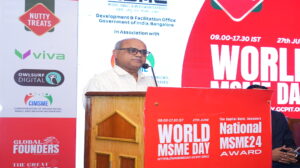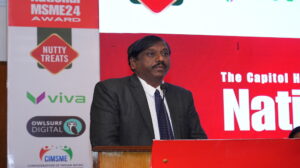Banking a billion: India’s thrust on digital economy propels country towards financial inclusion, societal transformation

India is making continuous strides towards a digital-first economy and at the crux of this transformation lies the successful investments that the country has made in terms of its digital infrastructure. It is this digital infrastructure that is powering India’ journey towards universal financial inclusion.
As the first head of the government to address the Singapore Fintech Festival, Prime Minister Narendra Modi highlighted how India has created an open innovation “Indiastack” which has fostered “access, inclusion, connectivity, ease of living, opportunity and, accountability” for every Indian.
Today, India provides a unique and digitally verifiable identity to 1.21 billion people who can avail government services, sign documents digitally and utilise payment systems using their fingertips. Using progressive policy measures such as provisioning of New Age payment banks, small finance banks and interplaying it with this world-class digital infrastructure, India has prepared itself well for Banking 4.0.
Based on government’s mantra of bottom-up policy focused on inclusion and coverage, Indian Postal Payments Bank was created leveraging on this digital infrastructure and 1.55 lakh postal offices for providing banking services to every corner of India. This creates one of the biggest banking distribution system which enables banking at your doorstep in local languages and by trusted partners.
India implemented the Jan Dhan programme which started as a yojana for providing zero balance bank accounts. It not only moved the erstwhile excluded population into the world of financial inclusion but also paved the way to access credit and other banking services. The 330 million Indians who have opened these bank accounts have reposed their faith by depositing more than Rs 85,000 crores. It’s a momentous achievement for India that the Jan Dhan Yojana has become a movement, a mindset that every Indian has an equal right to banking services, for accessing credit and other savings products.
. UPI has crossed over 480 million transactions in October 2018 which has grown more than 1,500 times since its inception. India’s very own RuPay card built on the backbone of “Indiastack” is helping India reach a billion debit cards. The unique combination of Aadhaar, payment products and DigiLocker are ushering in a new era of hassle-free, paperless, cashless transactions.
The interlinking of bank accounts with mobile and Aadhaar, fondly called the JAM trinity is another intelligent example of using the digital infrastructure to solve societal problems. This forms the backbone of the world’s largest targeted service delivery mechanism, DBT with over 430 government schemes using it. By removing the fakes, duplicates and ghost beneficiaries, the system has resulted in a savings of Rs 90,000 crore in prevented leakages, ensuring the entire Rs 100 that leaves the government coffers reaches the intended beneficiaries.
India unified itself again from a tax perspective by introducing the Goods and Services Tax (GST) — One Nation One Tax. GST system adds on to India’s digital infrastructure by creating the biggest self-compliant online invoicing and tax settlement system. The power of non-repudiable invoices and real-time data from payments and tax system are forming the backbone of democratising credit.
The ambitious MSME program leverages the data output from these systems and uses technologies like Artificial Intelligence to provide loans up to Rs 1 crore to MSME within 59 minutes based on the financial data of that enterprise. This is unprecedented and demonstrates how technology can be leveraged to speed up processes with the objective of accelerating the pace of India’s development.
The benefits of digital technology are helping India to aspire for larger goals, as the same infrastructure is now being cross-utilised for the world’s largest health insurance scheme. The Ayushman Bharat Scheme that aims to provide healthcare coverage to 500 million people is made possible due to India’s strong digital backbone. This ambitious scheme is one-of-its-kind across the world in terms of its size and scale providing a hassle-free, portable, paperless, cashless citizen experience.
Be it in an area of finance, or in an area of social welfare or inclusion of the excluded, the use of India’s digital infrastructure along with the right vision, leadership and intent is ensuring a bottom-up societal transformation which is leaving no one behind
(The writer is Eisenhower Innovation Fellow and a member of WEF’s Digital Economy and Society Futures Council and currently the CEO of MyGov)






